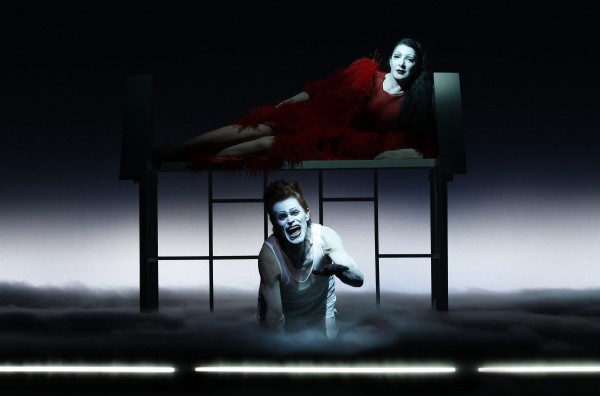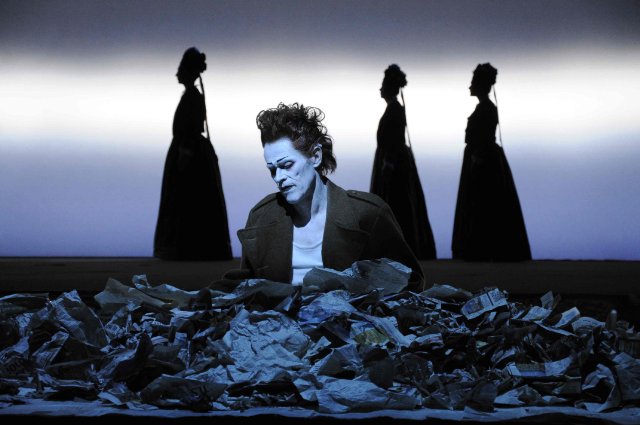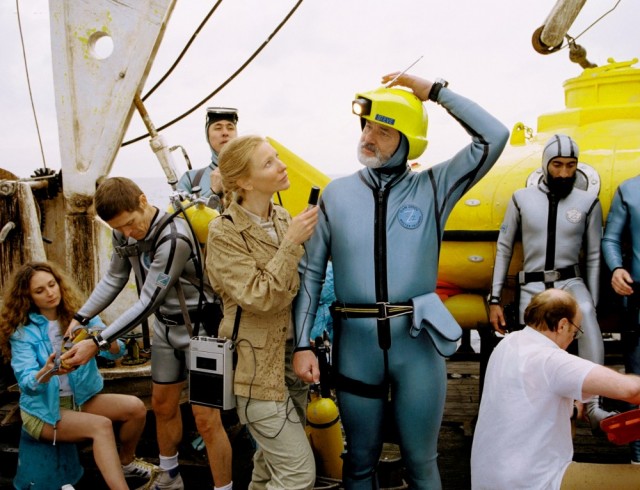NYMPHOMANIAC: EXTENDED DIRECTOR’S CUT (Lars von Trier, 2013)
MoMA Film, Museum of Modern Art
11 West 53rd St. between Fifth & Sixth Aves.
Sunday, November 23, 2:30
Series runs through January 16
Tickets: $12, in person only, may be applied to museum admission within thirty days, same-day screenings free with museum admission, available at Film and Media Desk beginning at 9:30 am
212-708-9400
www.moma.org
www.magpictures.com
When I reviewed Lars von Trier’s Nymphomaniac earlier this year, when it was released in two separate “volumes,” I wrote, “I certainly would have preferred seeing Nymphomaniac in one complete sitting rather than in two parts, one of which stands head and shoulders above the other (although they do need each other); however, I’m not sure what I’ll do when the five-and-a-half-hour director’s cut is released later this year.” Well, as promised, the extended director’s cut is now available for viewing, being shown November 23 at 2:30 as part of MoMA’s annual series “The Contenders,” consisting of films the institution believes will stand the test of time. What follows is a slightly amended version of my initial review of the first two volumes; there are an additional thirty minutes added to the first part, while the second part now includes what MoMA refers to as “some of the most gruesome and wrenching passages ever seen on film.”
In Breaking the Waves, Danish Dogme 95 cofounder Lars von Trier’s 1996 breakthrough, Stellan Skarsgård plays a paralyzed man who convinces his wife (Emily Watson) to have sexual liaisons with other men and then tell him about the encounters in graphic detail. In von Trier’s latest controversial, polarizing work, Nymphomaniac, Skarsgård stars as Seligman, a single man who takes in a woman named Joe (Charlotte Gainsbourg) who is soon sharing her own sexual adventures with him, in extremely graphic detail. After finding Joe severely beaten in an alley, Seligman nurses her back to health while carefully listening to her life story. She repeatedly says she is a bad, irredeemable human being because of the things she has done, which started to go off the rails when she was a small child discovering the pleasure sensations to be had in her nether regions. Her sordid tale is told in flashbacks, as her younger self (Barking at Trees’ Stacy Martin) goes from lover to lover to lover to lover to lover ad infinitum. (The specific numbers are plastered over the screen.) Along the way, Seligman offers his own interpretation of her life, praising her sense of freedom while comparing her sexuality to fly-fishing, which von Trier (Dancer in the Dark, Melancholia, Antichrist) relates in a playful way that is at first absurdly silly but actually ends up coming together. Unfortunately, however, Martin is far too bland as Joe as she beds victim after victim, including Jerôme (a miscast Shia LaBeouf), perhaps the only one who truly loves her. The film also features Christian Slater and Connie Nielsen as Joe’s parents and Uma Thurman as a scene-stealing wronged wife.
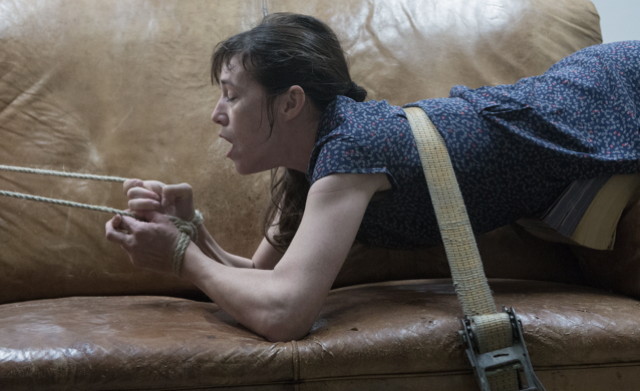
Joe (Charlotte Gainsbourg) continues her search for sexual pleasure and pain in the second half of NYMPHOMANIAC (photo by Christian Geisnaes)
The second half of von Trier’s four-hour graphic exploration of feminine sexuality and the very nature of storytelling itself is a masterfully crafted, often deadly dull and repetitive, but, in the end, gloriously inventive work. Joe (Charlotte Gainsbourg) is in the midst of telling her brutally in-depth tale of sexual addiction to the sincere and respectful Seligman (Stellan Skarsgård), who brought her into his home upon finding her badly beaten in a dark alley. In the flashbacks, Joe is now played with mystery and complexity by Gainsbourg, after the young Joe had been previously portrayed by the bland and boring Stacy Martin, and the change of actress is one of the key reasons why the second part works so much better than the first. Joe shares details of trying to make a sex sandwich, giving group therapy a shot, becoming obsessed with a violent sadist (Jamie Bell), and accepting a dangerous job with L (Willem Dafoe).

L (Willem Dafoe) offers Joe (Charlotte Gainsbourg) a dangerous job in controversial Lars von Trier sexual epic (photo by Christian Geisnaes)
In between her stories, which are divided into such chapters as “The Eastern and the Western Church (The Silent Duck)” and “The Mirror,” Seligman delves into various intellectual theories to help explain her exploits, discussing religion, paradox, democracy, language, mythology, Freud, and such dichotomies as suffering and happiness, pleasure and pain, Wagner and Beethoven, and the virgin and the whore. Cinematographer Manuel Alberto Claro’s camera is far more steady in these scenes, in contrast to the moving, handheld shots that dominate the flashbacks. The interplay between the calm, gentle Seligman and the lonely, lost Joe is beautifully acted and inherently touching, but, this being von Trier, the film’s ending will further controversies that already involve episodes of extreme violence and actual sexual penetration (the latter performed by body doubles). The MoMA series continues through January 16 with such other 2014 cinematic entries as Gillian Robespierre’s Obvious Child, Bennett Miller’s Foxcatcher, and Damien Chazelle’s Whiplash.

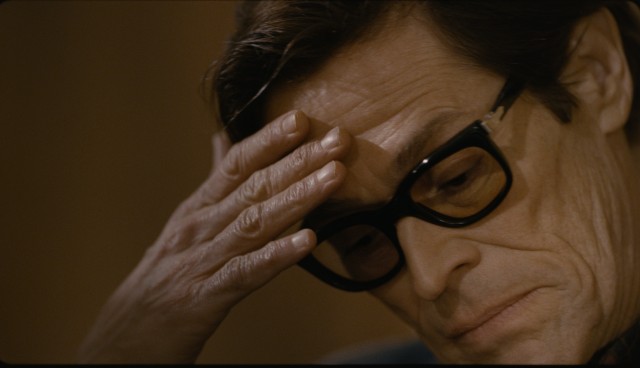
 Director Abel Ferrara packs a whole lot into controversial Italian writer and filmmaker Pier Paolo Pasolini’s last day on earth in the multinational coproduction Pasolini. Unfortunately, it all ends up a rather confusing jumble, with Ferrara (Bad Lieutenant, The Addiction) and screenwriter Maurizio Braucci (Gomorrah, Black Souls) squeezing too much into too little. Willem Dafoe stars as Pasolini on November 2, 1975, as the director is interviewed by a journalist, reads the newspaper on the couch, sits down at his typewriter to work on his novel Petrolio, edits what would be his final film (Salò, or the 120 Days of Sodom), and goes cruising to pick up a young stud. Ferrara adds enactments of scenes from the never-realized Porno-Teo-Kolossal, with Pasolini’s real-life lover, Ninetto Davoli, playing the fictional character Epifanio. (Davoli was supposed to play the younger Nunzio in the hallucinatory tale, about a search for faith and the messiah. Davoli is played by Riccardo Scamarcio in Ferrara’s film.) Ferrara never really delves into the internal makeup of Pasolini (The Gospel According to Matthew, Teorema), an openly gay outspoken social and political activist, poet, Marxist, Christian, and documentarian, instead using brief episodes that only touch the surface, as if Dafoe is playing a character based on Pasolini rather than the complex man who was indeed Pasolini. But Ferrara does get very specific about Pasolini’s mysterious, brutal death. Pasolini is screening October 2, 3, and 12 at the 52nd New York Film Festival.
Director Abel Ferrara packs a whole lot into controversial Italian writer and filmmaker Pier Paolo Pasolini’s last day on earth in the multinational coproduction Pasolini. Unfortunately, it all ends up a rather confusing jumble, with Ferrara (Bad Lieutenant, The Addiction) and screenwriter Maurizio Braucci (Gomorrah, Black Souls) squeezing too much into too little. Willem Dafoe stars as Pasolini on November 2, 1975, as the director is interviewed by a journalist, reads the newspaper on the couch, sits down at his typewriter to work on his novel Petrolio, edits what would be his final film (Salò, or the 120 Days of Sodom), and goes cruising to pick up a young stud. Ferrara adds enactments of scenes from the never-realized Porno-Teo-Kolossal, with Pasolini’s real-life lover, Ninetto Davoli, playing the fictional character Epifanio. (Davoli was supposed to play the younger Nunzio in the hallucinatory tale, about a search for faith and the messiah. Davoli is played by Riccardo Scamarcio in Ferrara’s film.) Ferrara never really delves into the internal makeup of Pasolini (The Gospel According to Matthew, Teorema), an openly gay outspoken social and political activist, poet, Marxist, Christian, and documentarian, instead using brief episodes that only touch the surface, as if Dafoe is playing a character based on Pasolini rather than the complex man who was indeed Pasolini. But Ferrara does get very specific about Pasolini’s mysterious, brutal death. Pasolini is screening October 2, 3, and 12 at the 52nd New York Film Festival.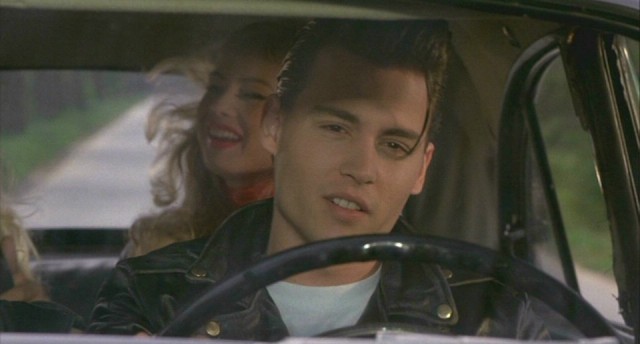
 It’s the drapes versus the squares as Grease and Rebel without a Cause meet West Side Story and Jailhouse Rock in one of trash king John Waters’s most accessible films, the romantic musical comedy Cry-Baby. Waters snatched 21 Jump Street heartthrob Johnny Depp right off the covers of teen magazines for his first starring role in a feature film, with Depp playing high school heartthrob and leather-jacketed bad boy Wade “Cry-Baby” Walker, leader of the rough-and-tough drapes, who also include his pregnant sister, Pepper (Ricki Lake), the trampy Wanda Woodward (porn star Traci Lords), Mona “Hatchet-Face” Malnorowski (Kim McGuire), and Milton Hackett (Darren E. Burrows). Lenora Frigid (Kim Webb) is desperate to go out with Cry-Baby, who earned his nickname because of the solitary tear that can trickle from one of his eyes, but he has his sights set on square queen Allison Vernon-Williams (Amy Locane), whose grandmother (Polly Bergen) runs a charm school and is disgusted by the juvenile delinquents. She much prefers Allison stay true to nerd king Baldwin (Stephen Mailer) than hang out with the dregs of society. But Allison and Cry-Baby’s love just might be meant to be. Writer-director Waters wonderfully evokes 1950s teen flicks with fast cars, the pangs of first love, and a delicious soundtrack of old and new tunes as Cry-Baby and Baldwin fight it out onstage in song instead of with knives or other weapons. (James Intveld sings Depp’s part, while Rachel Sweet does Allison’s.) Waters has also assembled a cast of parents to end all casts of parents: Troy Donahue and Mink Stole are Mr. and Mrs. Malnorowski, Joe Dallesandro and Joey Heatherton are Mr. and Mrs. Hackett, David Nelson and Patricia Hearst are Mr. and Mrs. Woodward, and Iggy Pop and Susan Tyrell are Mr. and Mrs. Rickettes. The story doesn’t always hold together, but Depp easily gets things back on track with his damn fine looks — er, charismatic performance. And yes, that prison guard is indeed Willem Dafoe. Cry-Baby, which was turned into a Broadway musical that earned four Tony nominations but had a very short run at the Marquis Theatre, is screening September 13 at 3:00 and September 14 at 8:00 as part of the spectacularly titled Film Society of Lincoln Center series “Fifty Years of John Waters: How Much Can You Take?” The series runs through September 14 and features all of Baltimore’s favorite son’s shorts and full-length works in addition to “Movies I’m Jealous I Didn’t Make,” eight films that Waters says are “extreme, astoundingly perverse, darkly funny, and, most importantly, supremely surprising films that turn me green with envy.
It’s the drapes versus the squares as Grease and Rebel without a Cause meet West Side Story and Jailhouse Rock in one of trash king John Waters’s most accessible films, the romantic musical comedy Cry-Baby. Waters snatched 21 Jump Street heartthrob Johnny Depp right off the covers of teen magazines for his first starring role in a feature film, with Depp playing high school heartthrob and leather-jacketed bad boy Wade “Cry-Baby” Walker, leader of the rough-and-tough drapes, who also include his pregnant sister, Pepper (Ricki Lake), the trampy Wanda Woodward (porn star Traci Lords), Mona “Hatchet-Face” Malnorowski (Kim McGuire), and Milton Hackett (Darren E. Burrows). Lenora Frigid (Kim Webb) is desperate to go out with Cry-Baby, who earned his nickname because of the solitary tear that can trickle from one of his eyes, but he has his sights set on square queen Allison Vernon-Williams (Amy Locane), whose grandmother (Polly Bergen) runs a charm school and is disgusted by the juvenile delinquents. She much prefers Allison stay true to nerd king Baldwin (Stephen Mailer) than hang out with the dregs of society. But Allison and Cry-Baby’s love just might be meant to be. Writer-director Waters wonderfully evokes 1950s teen flicks with fast cars, the pangs of first love, and a delicious soundtrack of old and new tunes as Cry-Baby and Baldwin fight it out onstage in song instead of with knives or other weapons. (James Intveld sings Depp’s part, while Rachel Sweet does Allison’s.) Waters has also assembled a cast of parents to end all casts of parents: Troy Donahue and Mink Stole are Mr. and Mrs. Malnorowski, Joe Dallesandro and Joey Heatherton are Mr. and Mrs. Hackett, David Nelson and Patricia Hearst are Mr. and Mrs. Woodward, and Iggy Pop and Susan Tyrell are Mr. and Mrs. Rickettes. The story doesn’t always hold together, but Depp easily gets things back on track with his damn fine looks — er, charismatic performance. And yes, that prison guard is indeed Willem Dafoe. Cry-Baby, which was turned into a Broadway musical that earned four Tony nominations but had a very short run at the Marquis Theatre, is screening September 13 at 3:00 and September 14 at 8:00 as part of the spectacularly titled Film Society of Lincoln Center series “Fifty Years of John Waters: How Much Can You Take?” The series runs through September 14 and features all of Baltimore’s favorite son’s shorts and full-length works in addition to “Movies I’m Jealous I Didn’t Make,” eight films that Waters says are “extreme, astoundingly perverse, darkly funny, and, most importantly, supremely surprising films that turn me green with envy. Two weeks ago, when the first half of Lars von Trier’s
Two weeks ago, when the first half of Lars von Trier’s 